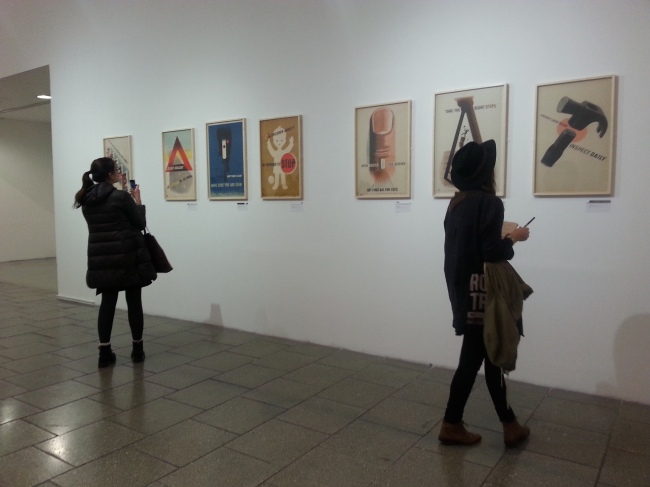2014 marks the centenary of Tom Eckersly’s birth, a graphic designer commonly thought of as “Master of the Poster”. To celebrate the anniversary, a collection of Eckersly’s works are on display at London College of Communication. The exhibition which runs until January 29, holds 40 prints of the designer’s posters that range in date from 1940s-1980s.

Eckersly’s bold graphic approach to poster design was well suited for works such as his safety posters in the work place and his works for the London Underground notices. They really are lovely to stand and admire as pieces of art and not just to be present for their functional purpose.
His simple yet striking use of shape and colour palette, is nicely complimented in the exhibition space the works are situated in at LCC. The capacity is a large, open and well lit area with each poster in identical frames neatly spaced in a single row around the room. However walking through the space which happens to be the main entrance to the college and is passed through daily by thousands, I would be surprised if you even noticed there was an exhibition holding works by a designer who is supposedly hugely admired in the college. The collection is supposed to be celebrating and bringing more awareness to a designer who launched the Graphic Design course at the college in the 1950s. This unfortunately is not at all clear. The pieces have been hung just above eye level so can be seen at a distance (however not so much if the space is packed with students and tutors as it tends to be) but cannot be properly admired up close due to the height of the positioning either. It is a real shame that the works of such an iconic and powerful designer, who brought about a massive positive change in the college, cannot be appreciated in the way that he deserves to be.

